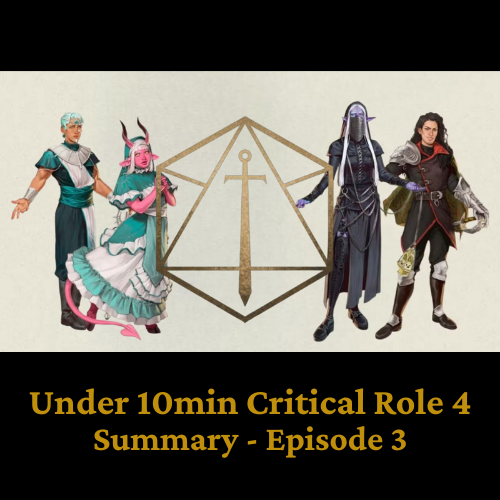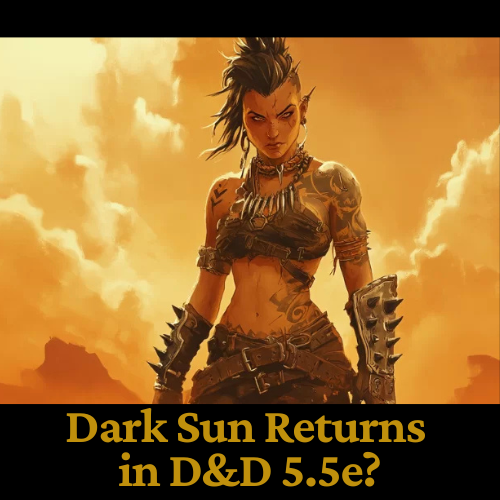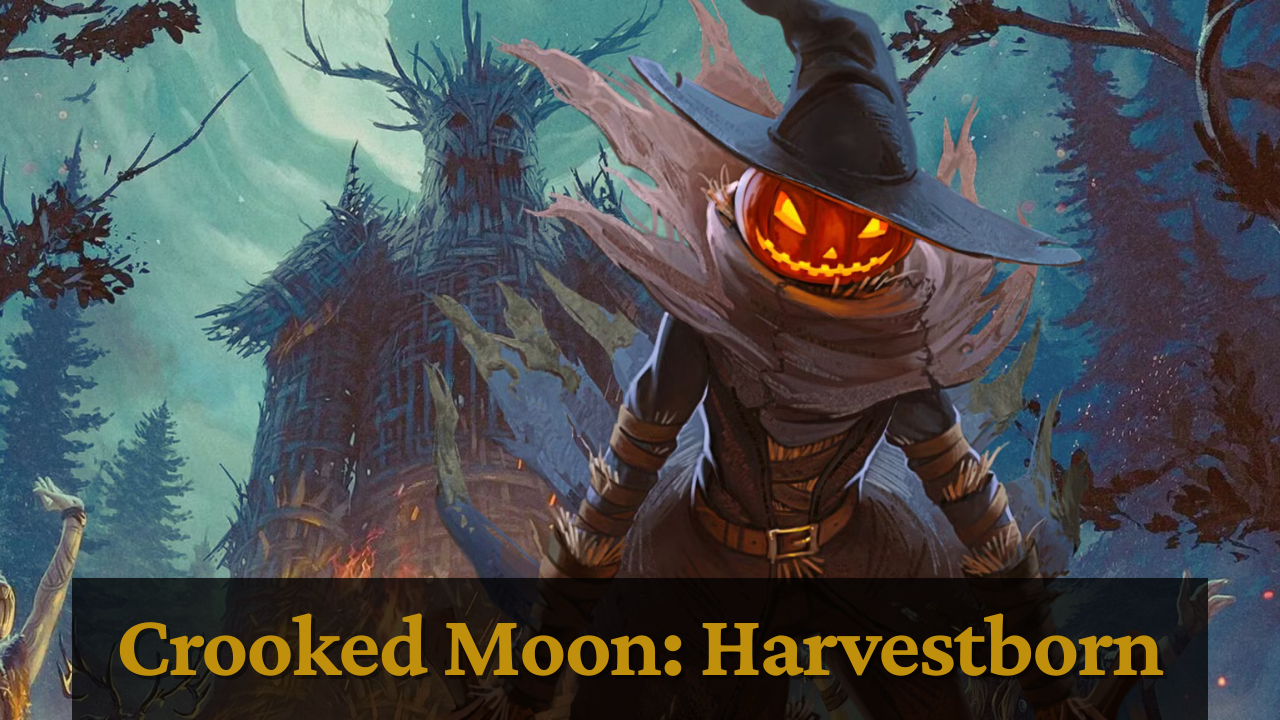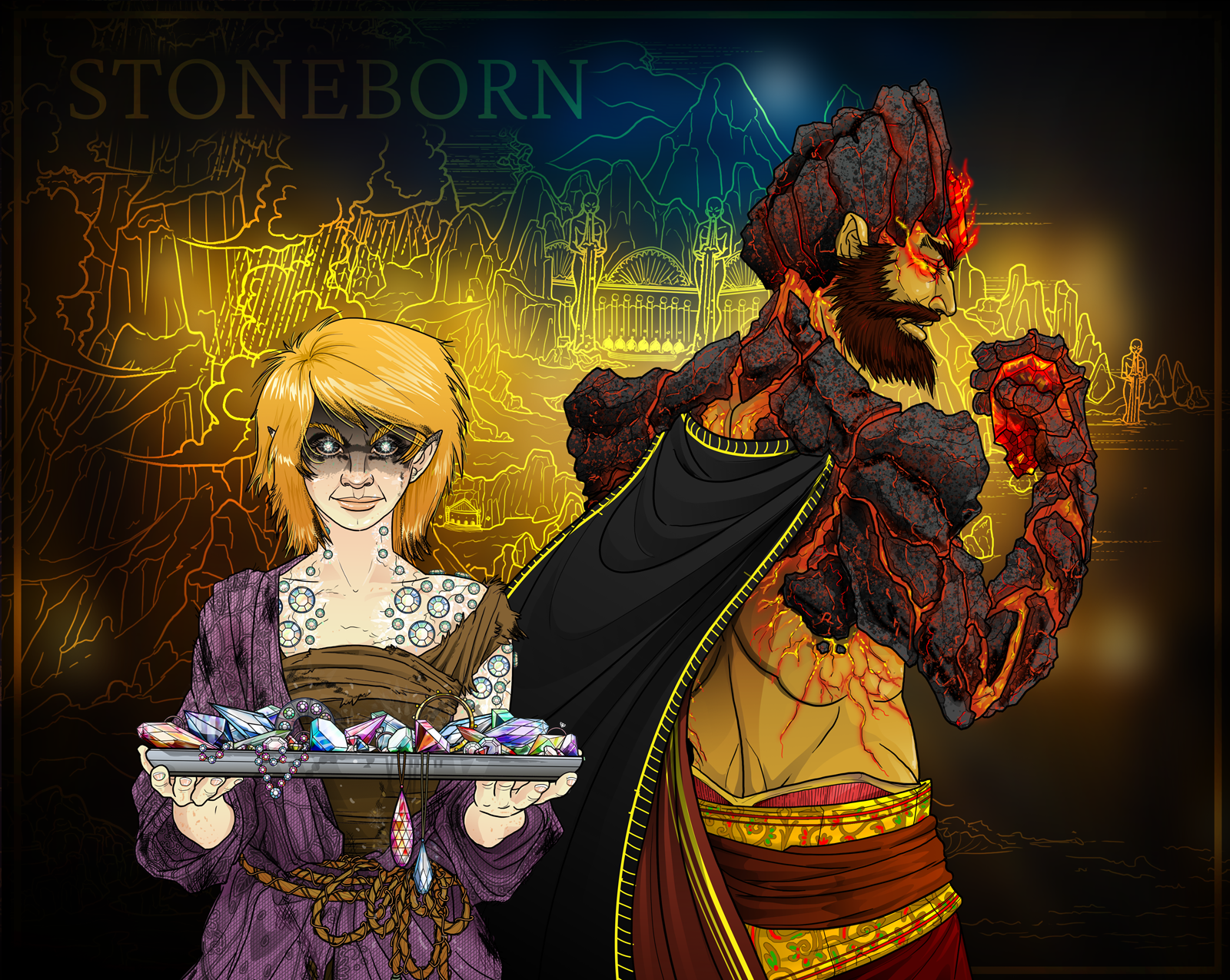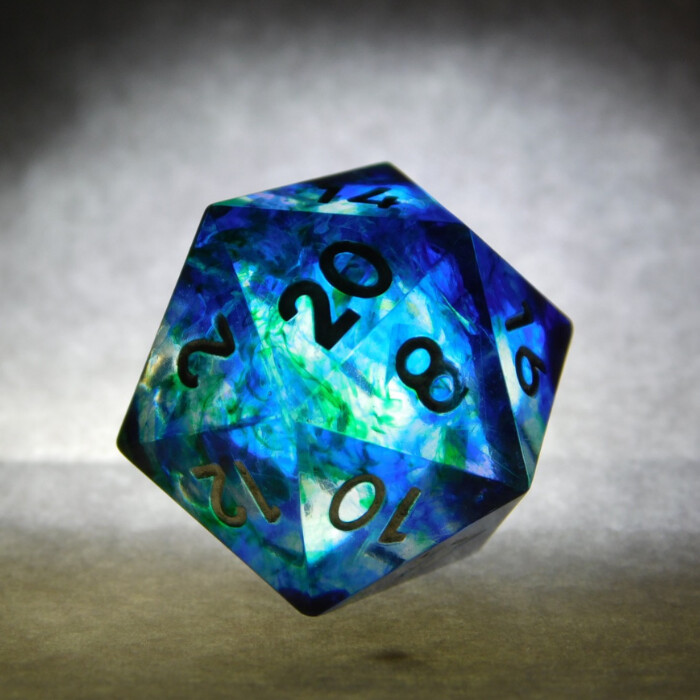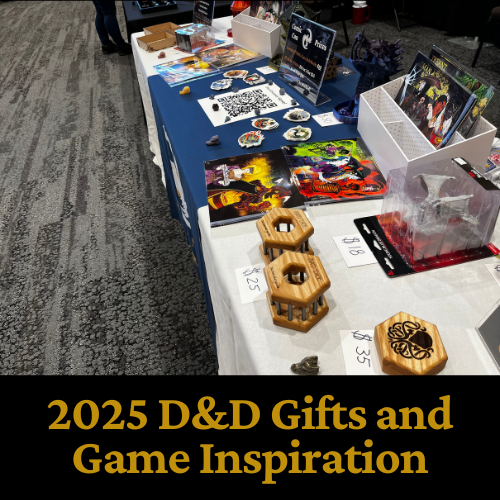Harvestborn — Scarecrow Souls of The Crooked Moon
Transcribed content from our recent YouTube video: https://www.youtube.com/watch?v=JgWieYGo8k8
Transcription
In Druskenvald, the fields whisper. When the harvest is ready, something else rises too — figures of burlap and bone, lit from within by ancient green magic. Welcome to Druskenvald, under the eerie light of the Crooked Moon, where the Harvestborn stand as living scarecrows bound to the land, the harvest … life and death.
Crooked Moon has become one of my favorite adventure supplements of all time, and you can get a copy from D&D Beyond.
Today on Eternity TTRPG, we’re diving deep into one of the most unique ancestries in the Crooked Moon setting: the Harvestborn. Whether you’re a player looking to build an unforgettable character, you’re a DM planning your next atmospheric campaign, or just someone who loves rich D&D lore, this video is for you.
We’re breaking down who the Harvestborn are, where they come from, what makes them so magically eerie, and how their mechanics and lore work together to create incredible storytelling opportunities. Think of this as your complete guide to understanding — and playing — these scarecrow-souled guardians of Enoch.”
The Harvestborn are somewhat like other mechanical races in D&D — but their spooky scarecrow model just makes for great stories, worth telling.
In The Crooked Moon / Druskenvald setting, each ancestry (or “species”) does have a sort of “home province,” but that doesn’t necessarily mean they only exist there.
Harvestborn are a constructed species native to the province of Enoch in Druskenvald. According to lore, they are crafted with great care by the lord of Enoch, Methuselah. These constructs are infused with a vibrant, green magic — the same life-essence that flows through the fertile fields of their homeland.
Methuselah is the patient, almost paternal figure who oversees the province of Enoch. He is deeply attuned to the green magic of his land — not merely as a ruler, but as a guardian of the cycle of life, death, and rebirth: under his watch, Harvestborn are created, nurtured, and eventually laid to rest so they may be reborn.
Though he is a lord, Methuselah is less interested in dominion through fear, and more through stewardship: his role is tied to growth and harvest, not conquest. This makes him a figure of both authority and nurture — one who shapes his people not just from straw and wood, but with intention and magic.
In a province-overview document for Enoch, Methuselah is described as: “a black-furred cat-man with eyes as gold as the province’s grain fields …” For role-playing, you could lean into the mystery of who this creator of Harvestborn is, and how his Character affects the Harvestborn: Where did this mysterious, and obviously powerful figure come from? What is his magical or ancestral origin? Does he share any soul-link with his Harvestborn creations?
Back to the Harvestborn, they resemble scarecrows — bodies of wood, straw, metal, and other implements. Their heads glow, sometimes made from pumpkins, turnips, or even burlap sacks. But though they look like eerie husks, they are deeply tied to life … and to death.
In their society, they live in harmony, focusing on community, fellowship, and the cycles of growth. Food is their harvest; death is their rebirth.
Mechanically, Harvestborn are constructs — not quite living, but driven by magic. They are Medium size, approximately 4 to 7 feet tall, and in-game move at 30 feet per round.
One of their defining traits is called Culling: when a Harvestborn damages a creature that is already wounded, they can deal an extra 1d12 necrotic damage. That’s powerful — especially when you’re finishing off a foe.”
But like their creator, they’re not just about dealing death. Harvestborn also have Gift of the Green. As a bonus action, you can touch the ground and grant healing: a friendly creature within 30 feet can roll a Hit Die, and they heal the amount rolled plus your proficiency bonus.
Then there’s Jack-O-Lantern: you know the Dancing Lights cantrip, and you choose whether your spellcasting ability is Intelligence, Wisdom, or Charisma.
Being constructs, you don’t need to breathe, eat, or drink. That’s the Scarecrow Nature trait. And for rest, you can actually skip sleep entirely: instead, you can take a Watchful Rest — staying motionless and conscious for 4 hours, but still count it as a long rest.
The Harvestborn are deeply thematic. Their existence is a living tension between life and death — they harvest crops, but they also harvest life’s vital essence. Their cycle of rebirth is intrinsic: they often live around 100 years, and then ‘accept death’ … only to be reborn again.
As a player, this opens up incredible role-playing opportunities. Do Harvestborn remember their past incarnations? Do they cherish each lifetime, or dread what comes next? Are they fully aware of their created nature … or do they feel things in a way similar to how a living soul does?
From a thematic standpoint, Harvestborn embody folk horror beautifully: agricultural rituals, seasonal death and rebirth, quiet sacrifices in the fields. Their identity is bound to community — they grow and heal their people, they protect the land … but they are also constructs, perhaps seen as eerie or uncanny by outsiders.
On a personal level: what memories do Harvestborn carry between lifetimes? Do they still form strong bonds with people of other ancestries, knowing they might reincarnate only to find their friend permanently dead? And then, perhaps, do they fear what it means to be reborn?
“So — why pick a Harvestborn for your Crooked Moon game? First, for the unique flavor: you’re not a typical D&D race. You’re a magical construct with deep roots in folk horror. Your mechanics reflect a duality: offensive power (Culling) and support (Gift of the Green), with cycles of death and rebirth.”
“Second, the role-playing potential is huge. Harvestborn come built in with internal conflict, an apparently never-ending cycle of life and death, the mystery of reincarnation — that’s rich ground for character development. And third, they fit the Fall/ Harvest time aesthetic: moody fields, harvest rituals, green magic shimmering in twilight — Harvestborn are made for a Harvest/ Halloween setting.”
At the end of the day, Harvestborn are more than just scarecrows — they are echoes of the land itself, vessels of green magic, and agents of an eternal cycle. In the folk-horror world of The Crooked Moon, they also bring a unique combination of power, mystery, and heart.”
But now, it’s your turn.
If you were to play a Harvestborn in your next game, how do you think you’d face your life, knowing that even after death – you’d simply be reborn? Would you welcome rebirth — or resist it, knowing that you’d never be able to outrun yourself, even at the end of your life? And if you could carry something forward into your next life – experiences you’ve had, love you’ve shared, desires you’ve felt, what would that be?”
“Drop your thoughts in the comments — I’d love to hear your cool Harvestborn roleplay ideas.
And if you enjoyed this deep dive into one of Crooked Moon’s coolest ancestries, don’t forget to like, subscribe, and hit the bell. Next time, we’ll explore another one of Crooked Moon’s lineages. Until then, may your roots stay deep, your light burn bright, and may every ending lead you toward your next beginning.
Dice, Dungeons, Games & More - Eternity TTRPG
Share This Article

Author - Jacob Tegtman
Dear reader, I hope you enjoyed this article. Tabletop gaming has been a passion of mine since I was 6 years old. I've played just about every game from Dungeons and Dragons to video games like Final Fantasy. These games have inspired me, made me laugh, made me cry, and brought me endless hours of enjoyment.
I started Eternity TTRPG - and the indie tabletop game that goes along with it (Eternity Shop) - to share my love of gaming with others. I believe that in our technology-driven age, tabletop games help bring a sense of magic and community back into our world.
If you love the site, please share it with others! I have lots of gaming-related material for you to peruse and use in your own gaming sessions. If you have any questions about the site or want to contribute, just send me a message using the "Contact" page, which you can find in the site's footer.
